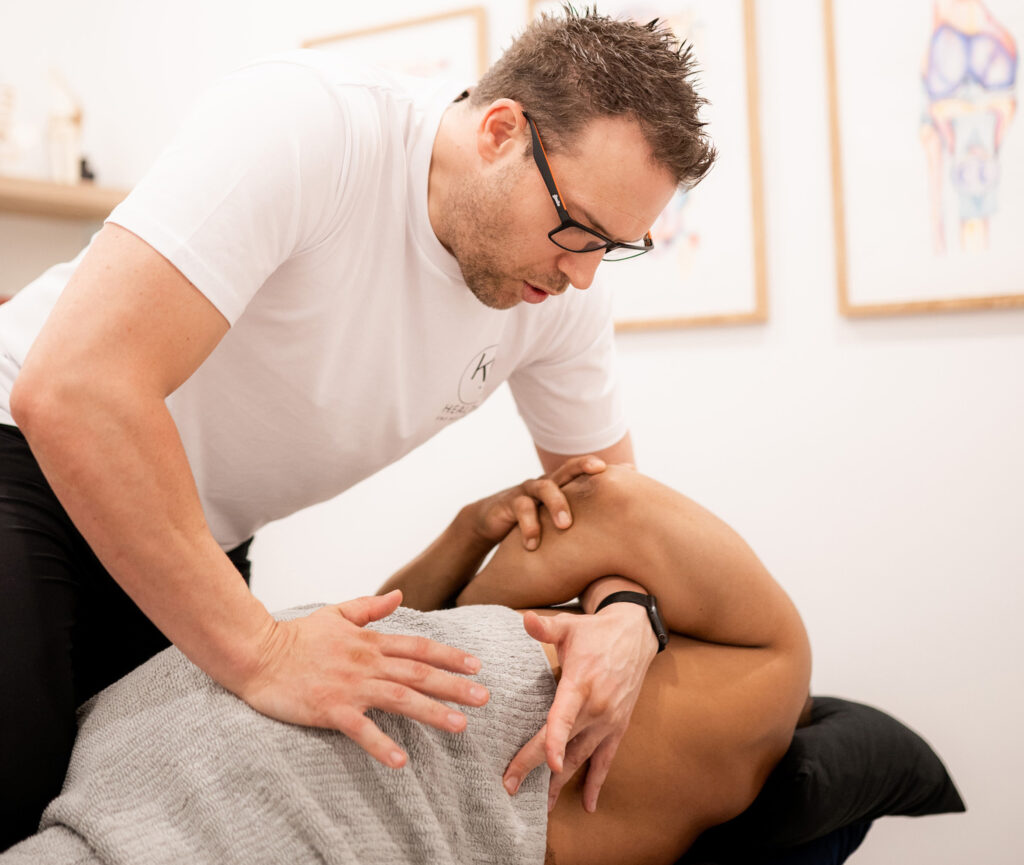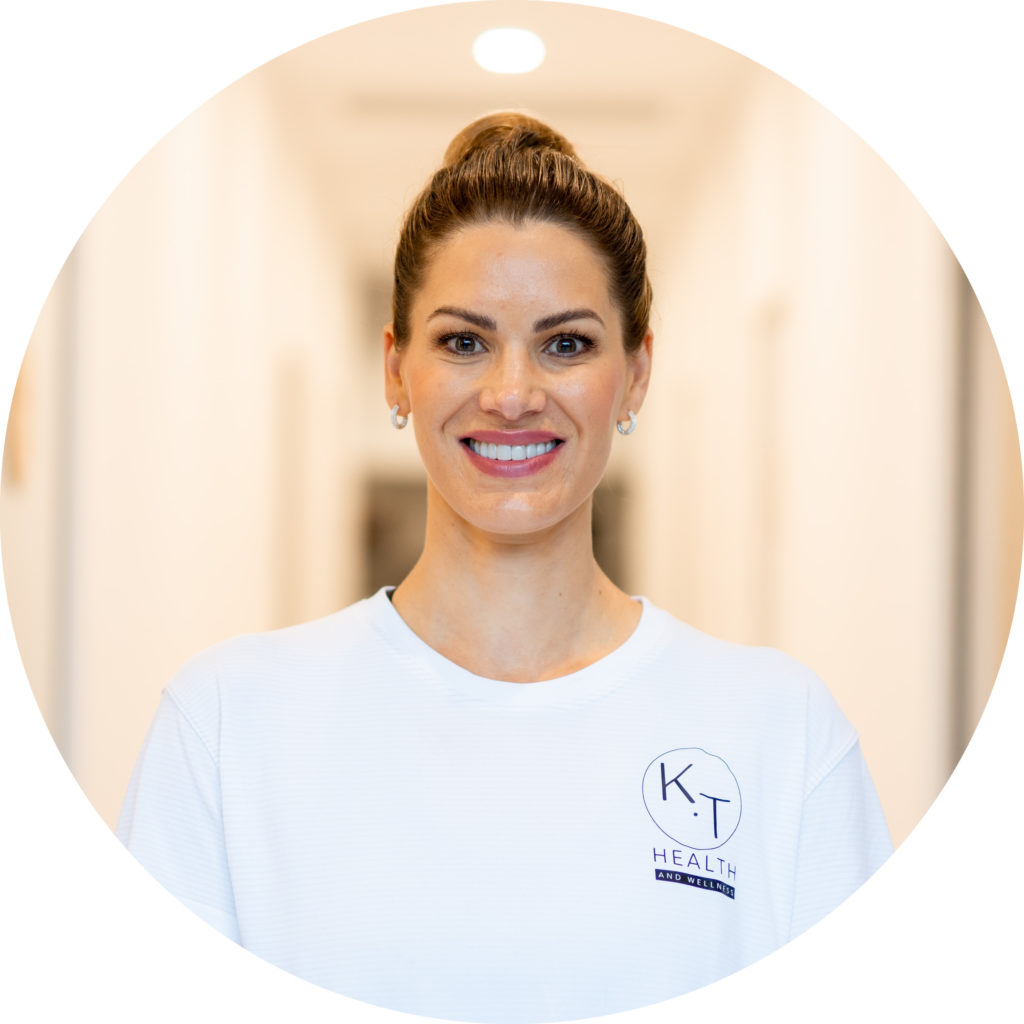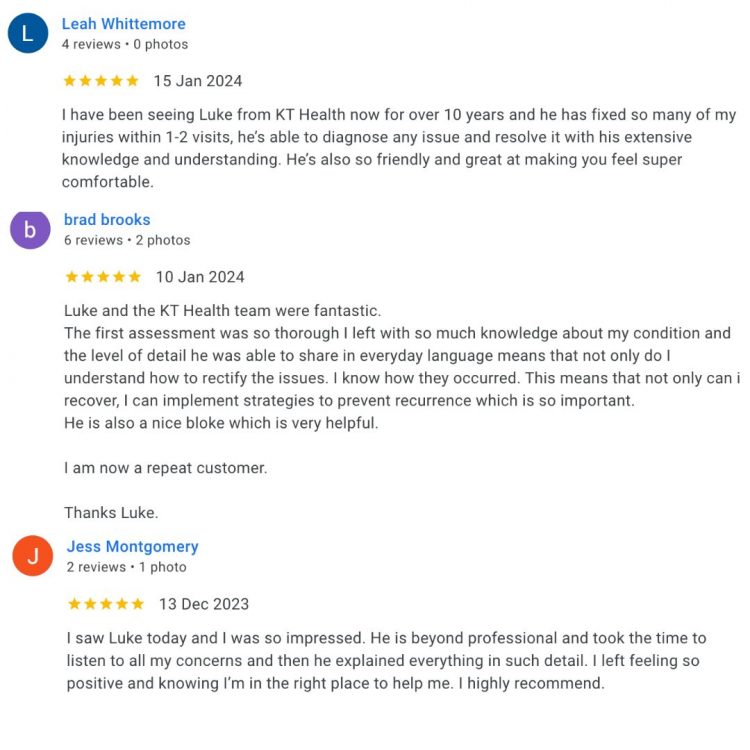Ulnar nerve compression is when the ulnar nerve gets squeezed or irritated, usually around the elbow (in the cubital tunnel, a narrow space on the inner side of the elbow). This nerve travels from the neck to the hand and controls feeling and movement in the ring and little fingers, as well as parts of the forearm and hand muscles. When compressed, it can cause tingling, numbness, and weakness in those areas.
An analogy…
Think of the ulnar nerve like a garden hose running through a narrow fence post. If you bend the hose too tightly or press on it for too long, the flow slows or stops, just like nerve signals get blocked when the ulnar nerve is compressed at the elbow.
What are other names that ulnar nerve compression can be called?
Funny Bone Syndrome
What causes ulnar nerve compression?
The ulnar nerve passes through a groove at the back of the elbow called the cubital tunnel. When your elbow is bent for long periods, or the area is under pressure (like leaning on it), the nerve can get compressed, stretched, or irritated. Repeated pressure or friction in this area can cause inflammation and nerve entrapment, leading to the typical symptoms of cubital tunnel syndrome.
What are the signs and symptoms of ulnar nerve compression?
- Tingling or numbness in the ring and little fingers
- Weak grip strength or hand coordination
- Pain or aching on the inside of the elbow
- Symptoms that worsen with prolonged elbow bending
- A feeling like the hand is “falling asleep”
What tests are used to diagnose ulnar nerve compression?
Tinel’s Sign (at the elbow): The practitioner gently taps over the ulnar nerve at the inside of the elbow (near the “funny bone”). A positive test occurs when this produces tingling or “electric shock” sensations down into the ring and little fingers.
Elbow Flexion Test: The patient bends the elbow fully and holds it for 30 seconds to a few minutes. A positive test is when this position causes numbness, tingling, or pain in the ring and little fingers.
How long does ulnar nerve compression take to heal?
Mild to moderate cases can improve with activity modification and therapy within 4 to 8 weeks. More persistent or severe cases may take 2 to 4 months. If surgery is required, recovery time depends on the procedure but may take 3 to 6 months, including rehab to restore strength and nerve function.
How does ulnar nerve compression happen?
- Prolonged elbow flexion
- Leaning on the elbow repeatedly
- Repetitive elbow movement
- Previous elbow injuries or arthritis
- Tight muscles or scar tissue around the cubital tunnel
- Poor posture or neck and shoulder tension contributing to nerve irritation
What treatment can help ulnar nerve compression?
- Activity modification (avoid leaning on elbows or keeping them bent for long periods)
- Night-time elbow splints or pads to keep the elbow slightly straight
- Manual therapy to release tight muscles around the neck, shoulder, and arm
- Stretching and nerve gliding exercises to mobilise the ulnar nerve
- Ergonomic changes at work or during daily activity
What exercises or stretches can I do for ulnar nerve compression?
- Ulnar nerve glides (nerve flossing)
- Neck and shoulder mobility exercises to reduce tension along the nerve path
- Wrist, hand, and grip strengthening
- Postural correction and upper limb alignment
What products can help with ulnar nerve compression?







